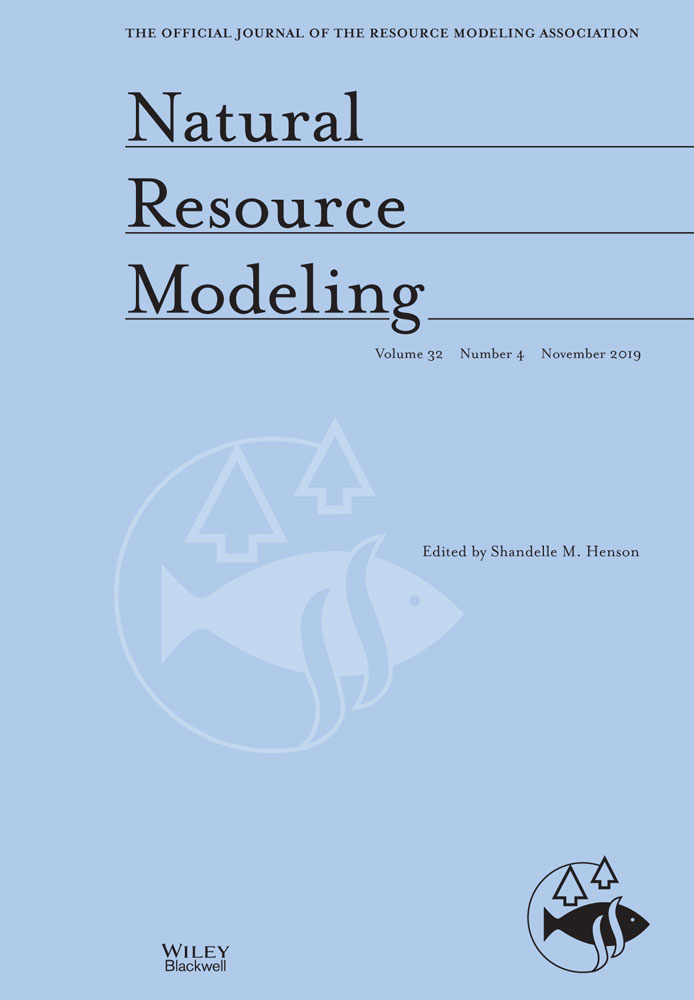Coexistence and harvesting control policy in a food chain model with mutual defense of prey
Abstract
A model is proposed to understand the dynamics in a food chain (one predator-two prey). Unlike many approaches, we consider mutualism (for defense against predators) between the two groups of prey. We investigate the conditions for coexistence and exclusion. Unlike Elettreby's (2009) results, we show that prey can coexist in the absence of predators (as expected since there is no competition between prey). We also show the existence of Hopf bifurcation and limit cycle in the model, and numerically present bifurcation diagrams in terms of mutualism and harvesting. When the harvest is practiced for profit making, we provide the threshold effort value  that determines the profitability of the harvest. We show that there is zero profit when the constant effort
that determines the profitability of the harvest. We show that there is zero profit when the constant effort  is applied. Below (resp. above)
is applied. Below (resp. above)  , there will always be gain (resp. loss). In the case of gain, we provide the optimal effort
, there will always be gain (resp. loss). In the case of gain, we provide the optimal effort  and optimal steady states that produce maximum profit and ensure coexistence.
and optimal steady states that produce maximum profit and ensure coexistence.
Recommendations for resource managers
As a result of our investigation, we bring the following to the attention of management:
- 1.
In the absence of predators, different groups of prey can coexist if they mutually help each other (no competition among them).
- 2.
There is a maximal effort
 to invest in order to gain profit from the harvest. Above
to invest in order to gain profit from the harvest. Above  , the investment will result in a loss.
, the investment will result in a loss. - 3.
In the case of profit from harvest, policy makers should recommend the optimal effort
 to be applied and the optimal stock
to be applied and the optimal stock  to harvest. This will guarantee maximum profit while ensuring sustainability of all species.
to harvest. This will guarantee maximum profit while ensuring sustainability of all species.




